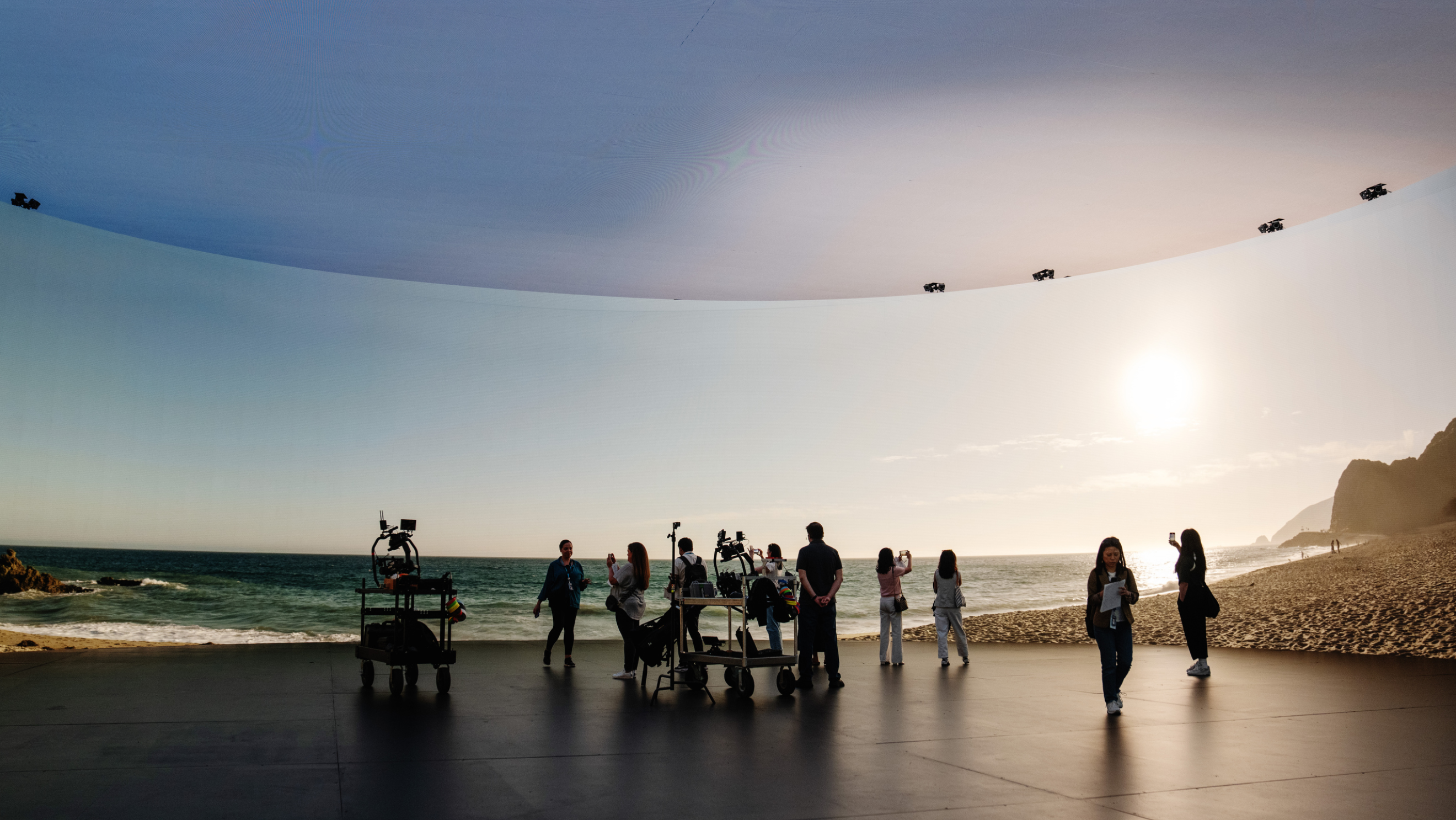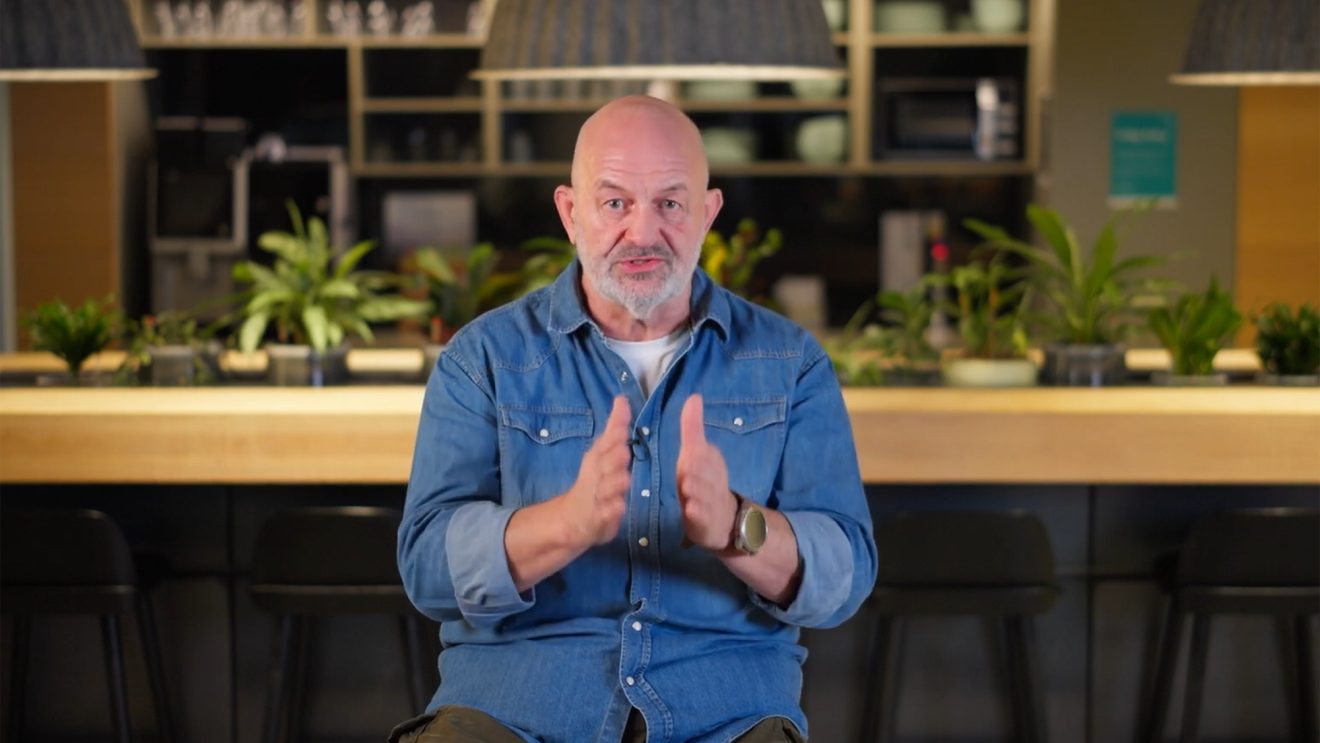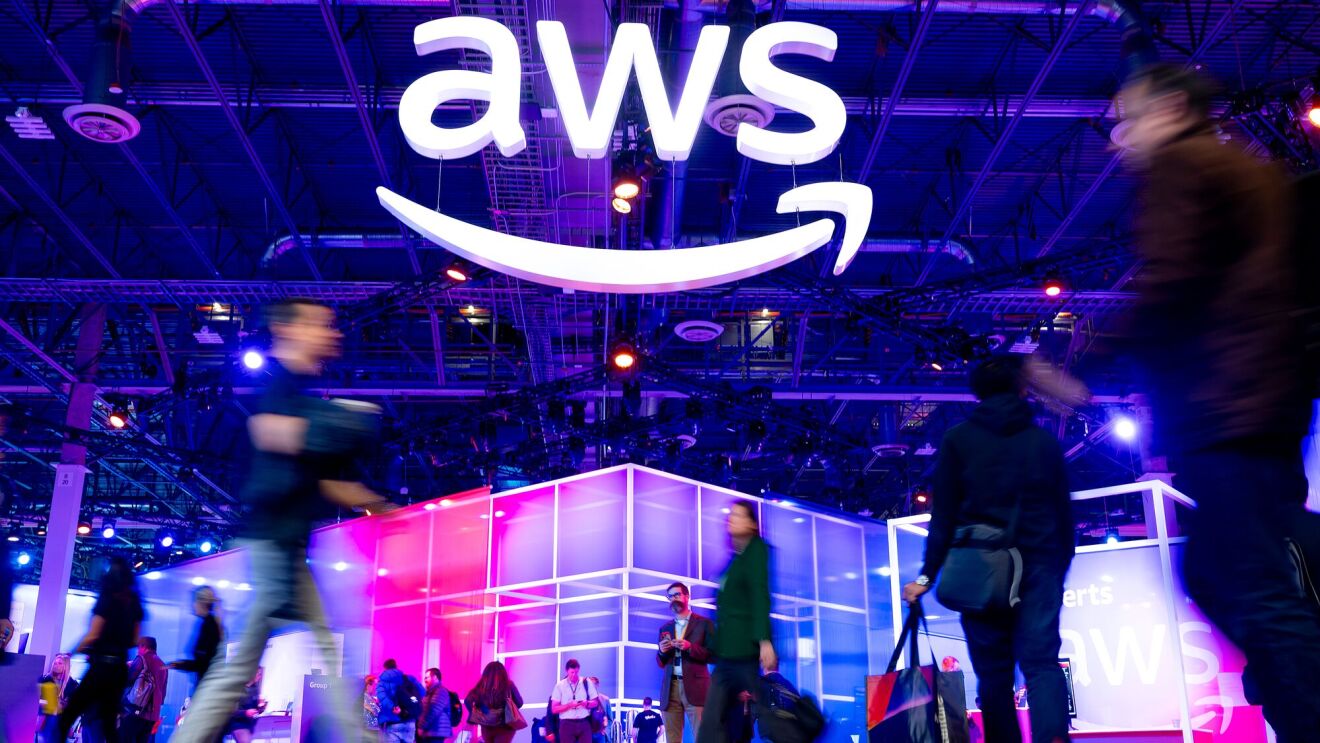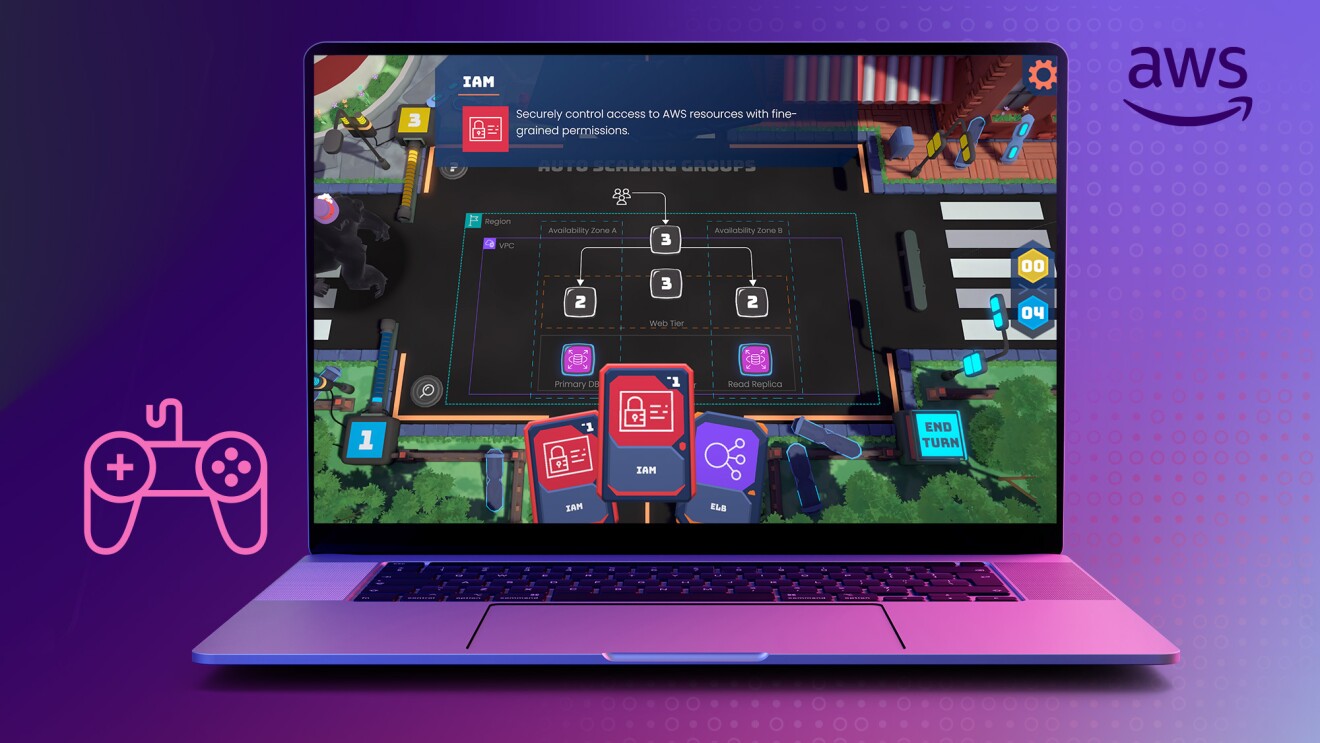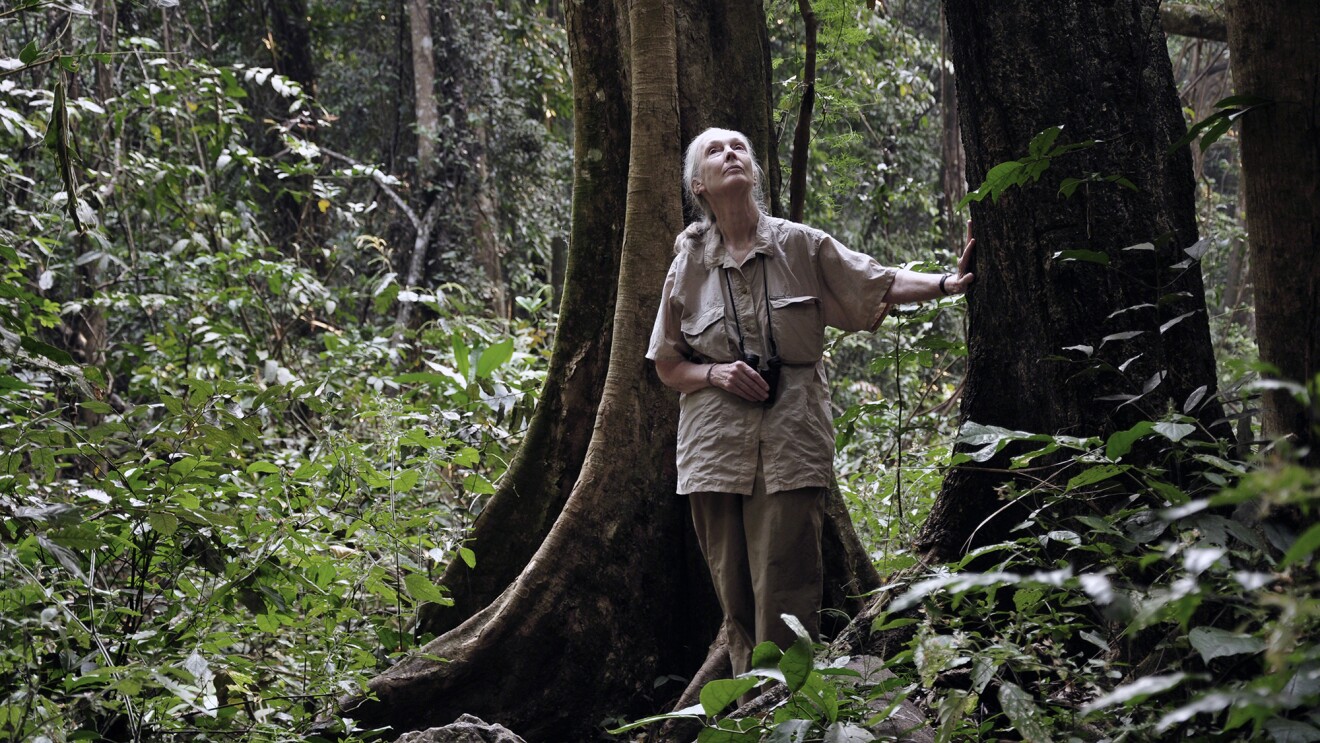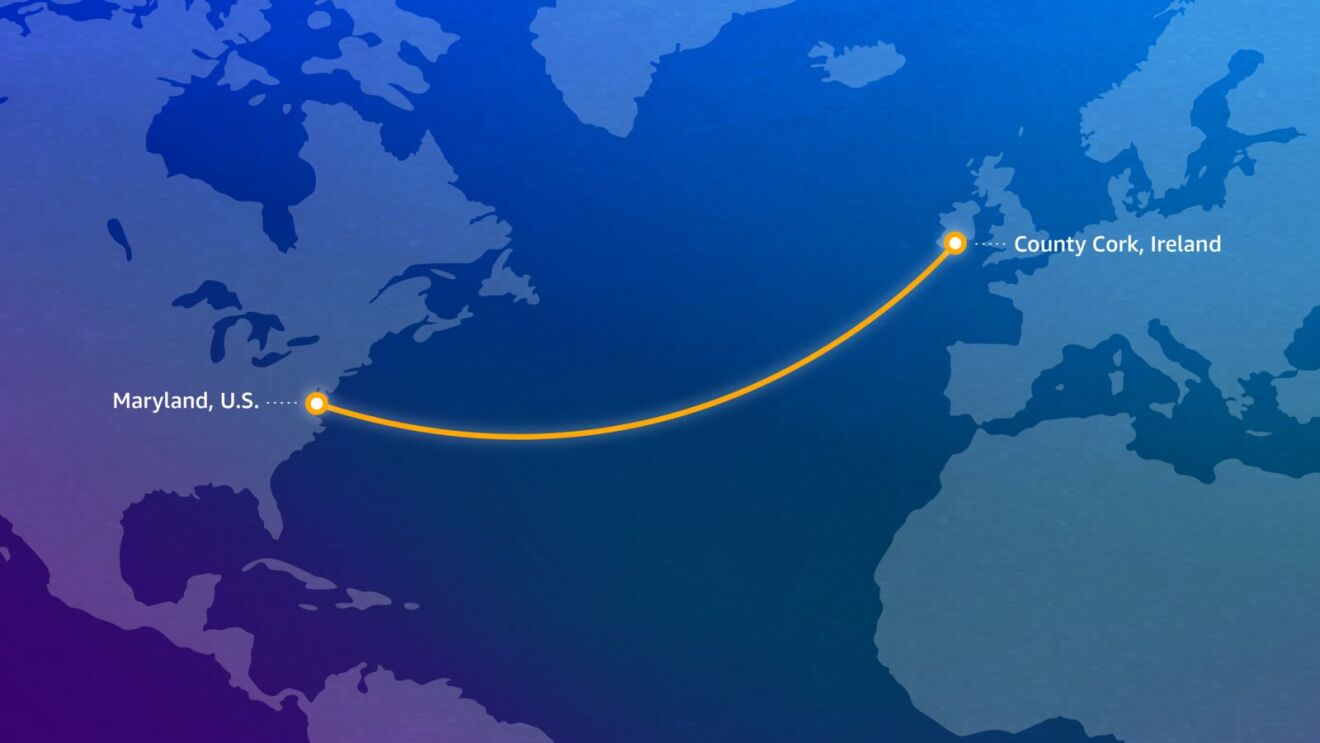On the southwest corner of the Amazon MGM Studios lot in Culver City, California, there’s a door that will transport you anywhere in the universe—from a sun-drenched stadium filled with 80,000 cheering football fans to the frosty twilight of a tranquil boreal forest to fantastic worlds at the farthest reaches of the imagination.
The portal—tall enough for a giraffe and wide enough for two elephants to traverse with ease—leads to Stage 15, a 34,000-square-foot production space that, through the power of AWS, is charting the future of film and television production.
“We’ve seen a lot of eras in our industry—the Silent Era, the Golden Era, the New Millennium,” said Gretchen Libby, director of visual computing AWS. “And now, with the power of the cloud and advances in AI, we’re in the Era of Endless Possibilities.”
Libby and Katrina King, AWS's global strategy leader for content production, outlined the top trends AWS is seeing in media and entertainment today, including the many uses of generative AI, the rise of greater personalization options for viewers, and an increase in producing live content in the cloud.
More on that below, but first take an exclusive tour of this universe-hopping, industry-defining facility, which has hosted productions including Candy Cane Lane, The Real Housewives of Orange County, Thursday Night Football promo shoots, and, more recently, the Amazon MGM feature film Mercy, starring Chris Pratt and Rebecca Ferguson.

Originally built in 1940, Stage 15 boasts a historic Hollywood pedigree as host to productions as varied as they are classic—from Frank Capra’s It’s a Wonderful Life to 1987’s RoboCop to TV’s Batman and Star Trek series. But, beginning in 2020, the space underwent a dramatic transformation to boldly go where few studios had gone before: reopening in 2022 as a virtual production mega-stage with capabilities that make the command deck of the Starship Enterprise feel quaint by comparison.
Beneath Stage 15’s 46-foot ceilings, a drum-shaped volume wall stretches 80 feet in diameter and 26 feet tall, nearly enclosing 130,700 cubic feet of interactive space. Comprising 3,000 LED panels and 100 motion-capture cameras and operated by Amazon MGM Studios Virtual Production (ASVP) department, the volume wall enables lighting and backdrops to be changed quickly, reducing the need to rebuild stages and making it easy for productions to shoot with continuous light—or to change it for a different time of day, weather, or other factors as the script demands.

“As the global head of visual effects at Amazon MGM Studios, there is a constant drive to innovate and build on past production lessons to solve challenges with new solutions,” said Chris Del Conte, global head of visual effects and virtual production for Amazon MGM Studios. “With Amazon being a movie studio owned by a technology company, we have a unique perspective about technology utilization and innovation.”
Because backdrops are generated using technology called the Unreal Engine, the volume wall is interactive and can be controlled and manipulated even as performers work. On-camera talent can act, interact, and react in real time within a three-dimensional set.

“Green and blue screens were once revolutionary, but with LED volume walls like this one here at Stage 15, powered by AWS, actors are no longer confined to empty screens,” Libby said. “They can be immersed in virtual environments that respond to their actions in real time, and help create entirely new worlds.”
Simultaneously, every shot taken on Stage 15 is sent to the Amazon S3 storage as part of the facility’s optimized camera-to-cloud workflow developed in partnership with—and powered by—AWS. As assets are captured, they can be safely and securely distributed worldwide, allowing dailies to be instantly available to creative teams from any location, reducing lag time when transferring files to various editorial, VFX, and postproduction partners and facilities.

“Today, because of the computing power, speed, reliability, and innovation that the cloud enables, studios can tap artists from around the world for unique talent and to keep productions on time,” said Libby. “Technology has always been a part of this industry—one that not only embraces technology, but drives it forward.”
Whereas artists used to have to wait overnight—or days—for files to render so they can see even small changes in their simulations or effects, they can now see results in real time, allowing them to iterate faster, save costs, and keep the creative process flowing.

The massive stage can be enclosed with two large movable panels, or extended outward in a keyhole shape some 60 feet to allow for extremely long dolly shots.
The Stage 15 facilities also include a “Sandbox” lab, a two-story building inside the stage that can serve as a virtual location-scouting space, performance-capture area, tech scouting space, and a green screen stage where close-up shots can be layered into bigger LED walls. Other facilities at Stage 15 include a smaller second LED stage, a mobile LED wall, camera tracking, an engineering workshop, and more.

“AWS is working with our customers and partners to showcase what’s possible by using a raft of new filmmaking technologies from virtual production and cloud rendering, to generative AI,” said Katrina King, AWS’s global strategy leader for content production. "Production crews used to be constrained by things like the weather, travel, and time. With virtual production and facilities like Stage 15, any hour is magic hour.”
Amazon filmmakers may access ASVP as a consultation resource for all production phases, from concept planning through post. The division has a full-time executive, engineering, and creative team of 20.

“In the past, only large companies could afford the computing power or ‘server farms’ to achieve their visions,” Libby said. “With AWS, production companies of all sizes have access to compute power and services on-demand, and only pay for what they use.”
Additionally, Libby noted, “At its core, AWS is helping media and entertainment customers of all sizes move fast and tackle their production needs. Our goal is to enable studios, broadcasters, VFX studios, and production companies to save time and money and bring in unique voices from all over the world to screens near you.”
Trending news and stories
- From the sofa to the sideline: Amazon's AI-powered Prime Insights take fans inside the game
- Getting started with Alexa+: How to unlock the full power of music discovery
- 10 tips to protect your Amazon packages this holiday season and beyond
- 8 awesome original shows to watch on Amazon Kids+, the award-winning subscription service for kids
